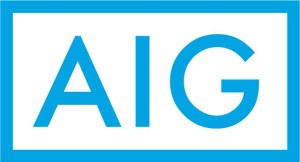AIG will separate its Life & Retirement division into a standalone company either through an initial public offering or private sale of the unit in stages over time. Which ever option executives choose, the division is also going to be kept together and not split into further pieces, according to Peter Zaffino, the insurer’s president and chief operating officer, and soon-to-be CEO.
Whichever course of action is chosen, Zaffino said the company hopes to “close on the first step of separation” in 2021.
“We are proceeding with a sense of urgency to determine the initial step of separation and will continue to engage with regulators and ratings agencies throughout the process,” Zaffino added during the company’s Nov. 6 Q3 2020 earnings call with analysts.
An IPO would be more of an all-encompassing option, where a private sale would involve selling just under 20 percent of Life & Retirement, with one ore more “dispositions” of AIG’s remaining ownership stake over time, Zaffino explained.
Zaffino’s remarks follow expressions of caution from ratings agencies, some of which said that the separation could ultimately leave AIG with a ratings downgrade.
 Much of Zaffino’s remarks on the proposed separation involved making the case for why AIG should do it at all, a decision he said came from a “comprehensive review” of AIG’s structure over the last several months. The conclusion, he reiterated, is that the value of both will be larger for shareholders as separate companies than the combined operation that currently exists.
Much of Zaffino’s remarks on the proposed separation involved making the case for why AIG should do it at all, a decision he said came from a “comprehensive review” of AIG’s structure over the last several months. The conclusion, he reiterated, is that the value of both will be larger for shareholders as separate companies than the combined operation that currently exists.
While much still has to be worked out, Zaffino said Life & Retirement will be separated from AIG as a single unit and not broken up into further pieces.
“We do not intend to break up Life & Retirement and sell it in pieces,” he said. “A significant strength of the business is the breadth of its platform and diversified product portfolio and distribution network.”
Arguments for Separation
- Property/Casualty turnaround. Zaffino said that AIG’s revamp and turnaround of its P/C, or General Insurance business, helped make the Life & Retirement separation both feasible and logical.
“The progress we’ve made since 2017 to strengthen the foundation of General Insurance materially reduced the risk and volatility of our portfolio, [and] positioned General Insurance as a market leader poised for sustainable, profitable Growth,” Zaffino said. “A separation of Life & Retirement from AIG would not be possible without a strong General Insurance business that can support itself and thrive on a standalone basis.”
- No additional capital required. AIG believes it can “effectively manage any loss of diversification benefits” in AIG’s capital model once the separation takes place.
“Our current expectation is that no additional equity capital will be required, given the improvements in our subsidiary capital position over the last three years,” Zaffino said. “That is especially true in General Insurance, where the capital base is the strongest that it has been in many years.”
- Strength in Separation. Zaffino explained that part of the separation process will require raising new debt for the Life & Retirement division, and restructuring debt at the AIG parent, so both have a sustainable standalone capital structure. That process will leave them in strong shape, he said.
“In the end, both companies will have independent capital structures in line with their peers, and appropriate financial leverage for their respective ratings,” he said. “Both companies will have strong financial flexibility to execute on their strategic priorities.”
- Tax advantages. “AIG’s deferred tax asset [a balance sheet item that comes from overpayment or advance payment of taxes] is no longer an obstacle as it was in the past,” Zaffino said.
AIG’s DTA in question consists of net operating loss carry forwards and foreign tax credits. Zaffino explained that regarding the net operating losses, AIG should have taxable income post separation that is enough to be able to use the remaining $6.6 billion before they expire.
“The foreign tax credit carry forwards have been significantly utilized in recent years,” Zaffino said. “And we expect to utilize the vast majority of the remaining $1.4 billion before we deconsolidate Life & Retirement, leaving only a small portion potentially at risk.”
- Relative Ease. According to Zaffino, “there [are] a limited number of legal entity restructurings required to achieve a separation, as well as limited expenses [for a separation].” He said that AIG’s streamlining and modernization effort already underway – AIG 200 – will help “facilitate operational separation.”
Of course, a final separation will need AIG board and regulatory approvals, rating agency considerations and also ultimately depend on market conditions, Zaffino noted.
AIG 200 Update
Zaffino said the company’s effort to digitize, modernize and streamline operations remains on schedule.
“We are on track to deliver and will likely exceed our original guidance of a $300 million exit run rate savings this year,” Zaffino said. He added that the company will likely also come in below its estimate of a $350 million cost to achieve that savings for 2020.
As well, AIG expects $1 billion in run rate savings by the end of 2022 from the effort, based on its original calculation of a $1.3 billion total investment.
Additionally, AIG doesn’t expect any delays or changes with its AIG 200 effort due to its planned separation of the Life & Retirement division,” Zaffino said.





















 Is the AI Boom a Bubble Waiting to Pop? Here’s What History Says
Is the AI Boom a Bubble Waiting to Pop? Here’s What History Says  First Atlantic Hurricane Forecast for 2026 Suggests Season Close to 30-Year Norm
First Atlantic Hurricane Forecast for 2026 Suggests Season Close to 30-Year Norm  Why ‘Good Enough’ Is Killing Insurance: The Hidden Cost of Satisficing
Why ‘Good Enough’ Is Killing Insurance: The Hidden Cost of Satisficing  Insurance Costs, Climate Concerns Factor Heavily in U.S. Home Buying Decisions
Insurance Costs, Climate Concerns Factor Heavily in U.S. Home Buying Decisions 






